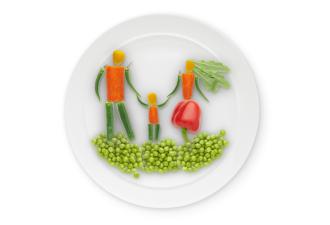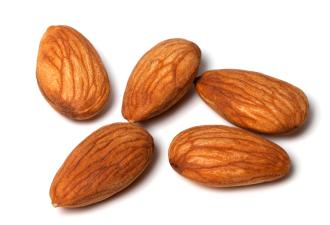
Cholesterol in childhood: Should we pay attention?
General information
Most parents do not evaluate cholesterol values in their children. However, high cholesterol levels are a major predisposing factor for cardiovascular diseases. Indeed, many studies link cardiovascular diseases to childhood. This is implied by the scientific report of the American Heart Association. The above, combined with the increasing rates of obesity, jeopardise the health of our children.
According to Dr. William Neal, director of the health centre of the University of West Virginia, in a survey conducted with his associates in 20,000 children, 548 were found with high levels of cholesterol in their blood. Indeed, 92 of them had to be introduced to medication for its treatment. The most important point is that none of these children had the background that would urge a parent or paediatrician recommend laboratory testing.
The problems associated with the high cholesterol levels are not perceived for several years, thus making it difficult to diagnose them. However, it is very important to know your child's cholesterol levels, especially if you have a family history of hypercholesterolemia or premature cardiovascular diseases.
Their detection will allow you, in cooperation with the instructions of an expert, to make the necessary changes in its diet to reduce cholesterol.
About cholesterol
Cholesterol is one of the lipids composed by the human body, and used in the structure of cells and the synthesis of various hormones. Therefore, there's no need to take it through food. Our body can cover its needs on its own.
There are no foods of plant origin containing cholesterol. The basic cholesterol sources are animal products, such as egg yolk, meat, poultry, seafood, dairy products, etc.
The Good, the Bad and the Ugly
Using the title of the famous film, we can refer to the types of cholesterol, to properly interpret the values of the tests.
Cholesterol cannot move on its own in the human body. In order to move, cholesterol is united to some protein molecules, forming a lipoprotein. Depending on its density, we distinguish this into low-density lipoprotein (LDL) and high-density lipoprotein (HDL). These are the types that most of us have heard of and appear on biochemical blood tests.
LDL - low-density lipoprotein: is “bad” cholesterol. The rise of cholesterol levels may contribute to the formation of atherosclerotic plaques and the narrowing of arteries.
HDL - high-density lipoprotein: is “good” cholesterol. This is involved in the transfer of cholesterol back to the liver for processing and removal from the body. The higher the values, the lower the risk of formation of atherosclerotic plaques and, ultimately, of cardiovascular diseases.
The values of the abovementioned lipoproteins, as well as of the total cholesterol, are defined by three main factors:
• Diet
• Genetic predisposition
• Physical activity
Children with increased physical activity, proper eating habits, normal weight and without family history of hypercholesterolemia are not usually at risk. In any case, it is the paediatrician who should refer the parent to laboratory testing for the child for the detection of cholesterol levels.
Brains, not brawn is the solution!
It is recommended that children with a family history of hyperlipidemia be examined between the 2nd and the 10th year of their age. If cholesterol levels are high, then the adjustments required will not be difficult; however they must be followed by the entire family and not only by the specific child. Nevertheless, dietary guidelines for reducing cholesterol are similar, to a large extent, to the typical instructions for a balanced diet. Moreover, as parents are deemed “role models” in their daily lives showing their child the right lifestyle and diet and lifestyle, they must be actively involved in the process; in other words, they must be “actors” and not “directors”.
Saturated and trans fats
Starting with the diet, you must reduce the intake of saturated and trans fatty acids. This should be done to all children and adults. Saturated fatty acids are mainly found in animal products, such as red meat, poultry skin, dairy products (milk, yoghurt, cheese), butter, chocolate and in fried and processed foods. To limit their intake, the following are recommended: limit the use of red meat (up to 1 time per week), remove the skin of poultry before cooking, limit the use of the frying pan at home and use low-fat dairy products. Processed foods, such as biscuits, wafers, crisps, etc., which also contain significant amounts of trans fatty acids, should be reduced in the daily diet. In no event should they be banned, but they should be chosen rarely and must not be kept in your kitchen cupboards. In other words, you must take them off your shopping list. Moreover, when you read labels carefully, you will find out that some companies have significantly reduced saturated fats and completely excluded trans fatty acids from their products.
At the same time, children must increase their intake of omega-3 fatty acids and natural fibres. Omega-3 fatty acids exist in fatty fish and in raw and unsalted nuts, such as almonds and walnuts. In a previous issue, we extensively referred to the ways of introducing these foods in the daily diet of the child. As regards natural fibres, the guideline is no other that the one we all know... introduce fruits, vegetables, legumes and traditional Greek vegetable casseroles in your diet, but be careful with the amount of oil you are using.
Eggs are forbidden: a Myth
Food cholesterol does not seem to significantly affect the levels of blood cholesterol. Therefore, the guideline to avoid eggs is now history. Children can eat eggs safely, when they are used to so. However, egg consumption must not be combined with red meat or seafood, which are also foods rich in cholesterol, in the same day.
Physical activity may be useful and fun
Along with the diet, you should also promote physical activity. You can do so, urging your child to join a sports club, and participate in the sport yourselves. Do not forget! You are also an actor in this play!!! Try to find ways to exercise with your children. You may go bike riding on Sundays, go for a walk, swim or even dance. You do not need to become champions but to add some action in your lives.
With the above suggestions - guidelines, we can all enjoy a better lifestyle and especially a higher standard of living, reducing the risk of chronic diseases and promoting health. Certainly, the guidelines and articles are not a solution; however the knowledge derived from them is invaluable for new parents with high goals who want to be role models for the future of their children as well as their own.
Advice
The nutritional information and recommendations on infant-toddler diet are indicative and refer to general guidance for this age group. Time that every child can be introduced to solid foods or add more to it’s diet, must be individualized. We recommend to set advise from your pediatrician about the specific nutritional needs of your child.











